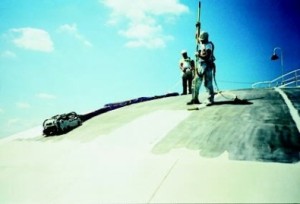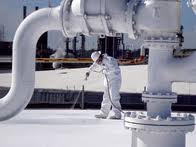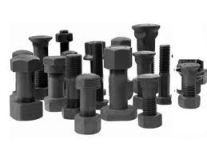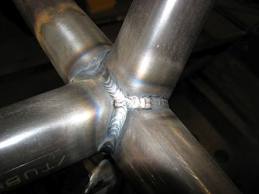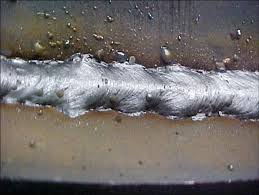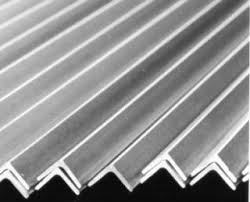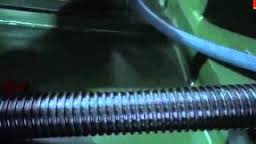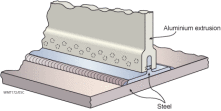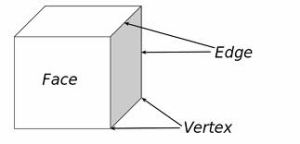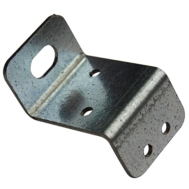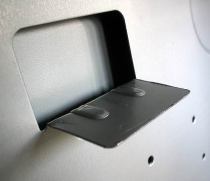Many structures are not designed with the coating process in mind. Design flaws and fabrication faults can easily complicate surface preparation and application of a successful coating system.
Neither the applicator, the inspector nor even the coating scan can be blamed for problems engendered by the work of designers, engineers, and/or fabricators. We are able to provide valuable insight by identifying design and/or fabrication problems that make the job highly difficult to do well.
Some common design defects that affect the coating process include:
- Hard to reach or inaccessible areas
- Rivets, bolts, or other connectors
- Welds
- Gaps (particularly skip welds or surfaces close together)
- Overlapping surfaces (e.g., Roof plates in water tanks)
- Angle iron badly oriented or in complex arrangements
- Threaded areas
- Dissimilar metals
- Sharp edges, particularly on corners or rough cut plate
- Construction aids
Hard to Reach Areas:-
Hard to reach areas are difficult to coat properly and need special attention to ensure proper coating.
Rivets and Bolts Construction:-
Designs that feature riveted and bolted areas can leave gaps as well as very tight areas that are next to impossible to clean and coat. It is extremely difficult to protect bolts in these design configurations.
Welds:-
Welds generally present rough, discontinuous areas on a plane surface and may have many sharp edges. Too frequently welds are not cleaned properly leaving weld spatter, slag, and acid flux residues. If these imperfections are not removed, corrosion may happen.
Overlapping:-
Overlapping plates and roof plates, generally skip-welded, create areas inaccessible for either cleaning or coating. Overlapping plates create crevices and moisture accumulation which makes corrosion occurrence.
Angles:-
Angles are frequently used in construction. Often, the backsides of these angles are not coated but are sometimes pre-coated with galvanizing or inorganic zinc. The area between the angles may be impossible to clean and coat. Seal the void space around the angles with caulking or mastic to prevent corrosion and the possible undercutting of coating on the edges. Other alternatives may include penetrating sealers.
Threaded Areas:-
Threaded areas are very difficult to coat; take care to ensure workers adequately clean and coat all surfaces. There are many crevices and sharp edges with threads that can lead to initiation of corrosion. Since threads are difficult to clean and coat properly, replace threaded outlets by flanged or pad type outlets, which are generally more easily accessible.
Dissimilar Metals:-
Dissimilar metals that come in contact with each other create a galvanic cell, which can start corrosion resulting in coating failure. Whenever dissimilar metals must join, coat all connected dissimilar metals.
Edges:-
A typical structure may contain edges that are many linear feet long, most of which have no rounded edges. Sheared edges and flame-cut edges created during fabrication are likely to be sharp and very problematic in the coating process. Coatings generally have an inclination to shrink and pull back from the edges, leaving a thin, less protective coating.
Construction Aids:-
Construction aids such as hold-downs, brackets, etc., are often welded to a structure with skip welds or with only one side of the joint welded. These temporary aids, designed to be removed after construction, are sometimes left in place and over coated along with the original coating application. When this happens, surface preparation services or coating application may be less than ideal and early coating failures occur.
Corners:-
Corners behave like sharp edges and the same tendency for corrosion occurs. Stripe coat them as a matter of good practice.
SGI provides services for corrosion protection and Industrial cleaning.
 SGI is a privately owned company headquartered in Gujarat, India with representatives in North America.
SGI is a privately owned company headquartered in Gujarat, India with representatives in North America.
- The company operates its own two shop locations in Gujarat.
- SGI has experience over 33 years in surface preparation, thermal coatings, industrial cleaning and industrial coating and lining services.
- All SGI operatives are highly-experienced specialists are qualified to work offshore, in confined spaces and at height.
- SGI is accredited with ISO 9001-2008.
- Our QA/QC team comprises NACE certified inspectors.

